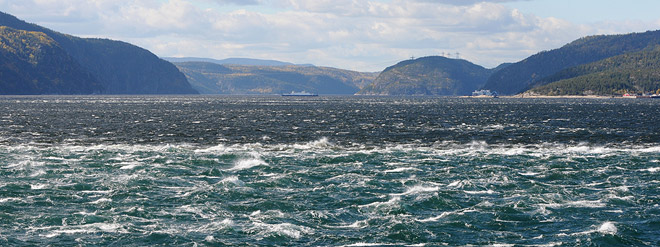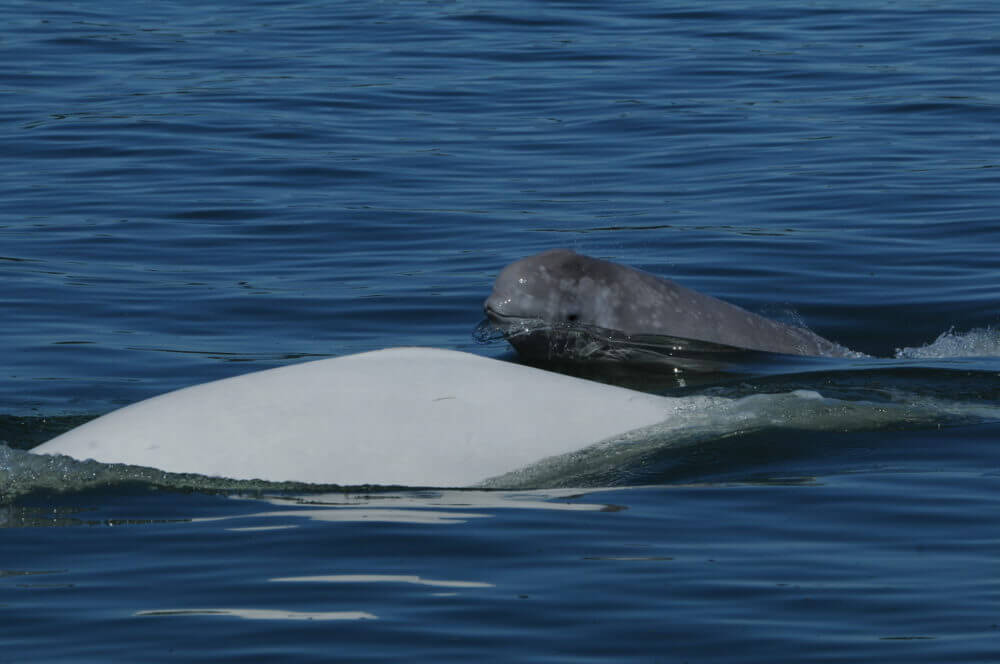Saguenay Fjord
A fjord is a valley carved by glacial erosion and then flooded by the sea. At the end of the Wisconsin glaciation 10,000 years ago, a glacier retreated and eroded a pre-existing fault. The 2-kilometre wide valley was then flooded by water from the St. Lawrence Estuary, unlike most fjords, which flow directly into the ocean. This is how the Saguenay Fjord and its 500-metre high cliffs were formed.
The 105 km long fjord begins at Saint-Fulgence and ends in Tadoussac, where the Saguenay River spills into the St. Lawrence. At Tadoussac, the Fjord is narrower and shallower. This is because during deglaciation, the glacier began to float atop the river water in these parts, effectively ending any erosion.








